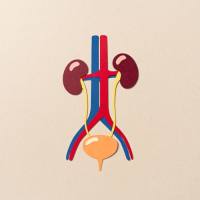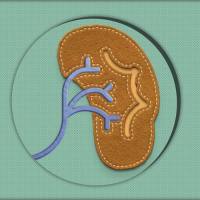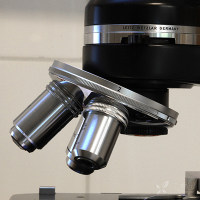【摘要翻译】前列腺癌患者血液中前列腺特异性抗原表达细胞的潜在诊断意义
摘要:
目的:
前列腺特异性抗原(PSA)的检查已经在前列腺癌的筛查中广泛应用.但是血清PSA的低特异性导致了许多假阳性,假阴性和临床上的不确定性.前列腺癌特异的诊断和预测指标的发展势在必行.检测前列腺癌患者血中和骨髓中前列腺特异性抗原循环表达细胞(CPEC)有作为分子诊断和预测的可行性.作者独创性的发现:通过从原位前列腺癌患者外周血中获得的上皮细胞增殖后进行RT-PCR,检出了CPEC细胞.证明了将CPEC细胞作为前列腺癌分子诊断及预测指标的可能性.
方法:
对从根治性前列腺切除或前列腺活检的患者外周血中获得的上皮细胞分别使用抗上皮细胞抗体(BerEP4,包被磁珠),对所有从样本中获得的RNA用RT-PCR做PSA表达分析.
结果:
在135名前列腺癌患者的外周血样中,108名 ( 80.0%) ERT-PCR/PSA 分析为阳性.而对照组的45个血样中97.8%为阴性.在盲法研究中,84名因为怀疑有前列腺癌可能而行前列腺活检的患者被用ERT-PCR/PSA重新评估.在22名活检证实为前列腺癌的患者中,18名(81.8%)为阳性,而在62名活检为阴性的患者中,有54名(87.1%)此项分析为阴性.(P<0.001)
结论:
此研究结果表明:大多数临床原位前列腺癌患者均有前列腺特异性抗原循环表达细胞(CPEC)的存在.活检结果和ERT-PCR/PSA分析的高度一致性(敏感度81.8%,特异度87.1%)提示此项分析为前列腺癌的诊断提供了一种潜在的新方法.
原文:
Diagnostic Potential of Prostate-specific Antigen Expressing
Epithelial Cells in Blood of Prostate Cancer Patients
1
Chun-Ling Gao, Sudhir K. Rawal, Leon Sun,
Amina Ali, Roger R. Connelly, Lionel L. Ban
˜ ez,
Isabell A. Sesterhenn, David G. Mcleod,
Judd W. Moul, and Shiv Srivastava
2
Center for Prostate Disease Research, Department of Surgery,
Uniformed Service University of the Health Science, Bethesda,
Maryland 20814-4799 [C-L. G., S. K. R., L. S., A. A., R. R. C.,
L. L. B., J. W. M., S. S.]; Armed Forces Institute of Pathology,
Department of Genitourinary Pathology, Washington, DC 20307
[I. A. S.]; and Urology Service, Walter Reed Army Medical Center,
Washington, DC 20307 [D. G. M., J. W. M.]
ABSTRACT
Purpose: Prostate-specific antigen (PSA) test has be-
come a widely used screening test in prostate cancer (CaP).
However, low specificity of serum PSA leads to many false-
positive and false-negative results and clinical uncertainty.
Development of CaP-specific diagnostic and prognostic
markers is needed. Detection of circulating PSA-expressing
cells (CPECs) in blood and bone marrow of CaP patients has
potential in molecular diagnosis and prognosis. Our novel
observations of the frequent presence of CPECs in CaP
patients with organ-confined disease by reverse transcrip-
tion (RT)-PCR-PSA assay in epithelial cells enriched from
peripheral blood (ERT-PCR/PSA) have led us to test the
hypothesis that CPECs have diagnostic potential for CaP.
Experimental Design: Epithelial cells from peripheral
blood of radical prostatectomy patients or prostate biopsy
patients were isolated using antiepithelial cell antibody, Ber-
EP4-coated magnetic beads, and total RNA specimens from
these cells were analyzed for PSA expression by RT-PCR.
Results: Peripheral blood specimens of 108 of 135
(80.0%) CaP patients were positive in ERT-PCR/PSA assay.
Peripheral blood specimens from 45 control men were vir-
tually negative (97.8%). In the blinded investigation, 84
patients who had biopsy for suspicion of CaP were evaluated
by ERT-PCR/PSA assay. Eighteen of 22 (81.8%) patients
with biopsy-proven CaP were positive, and 54 of 62 (87.1%)
patients with biopsy negative for CaP were negative in this
assay (P
< 0.001).
Conclusions: Our study provides intriguing novel re-
sults showing that the majority of patients with clinically
organ-confined CaP contain CPECs. Strong concordance
between the biopsy results and ERT-PCR/PSA assay (sensi-
tivity 81.8%; specificity 87.1%) suggests a potentially new
diagnostic application of this type of assay in CaP diagnosis.















































